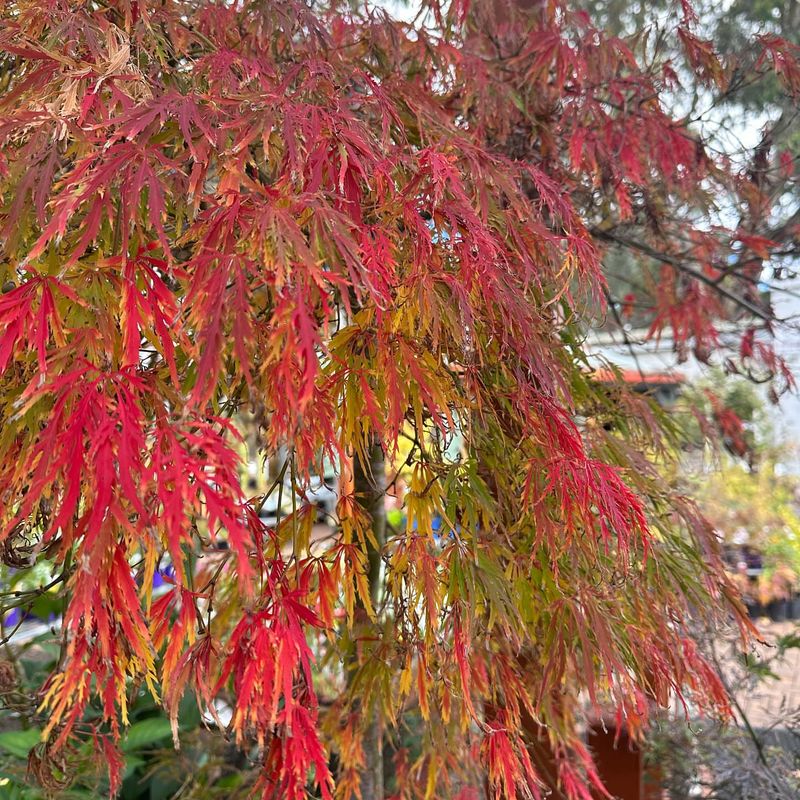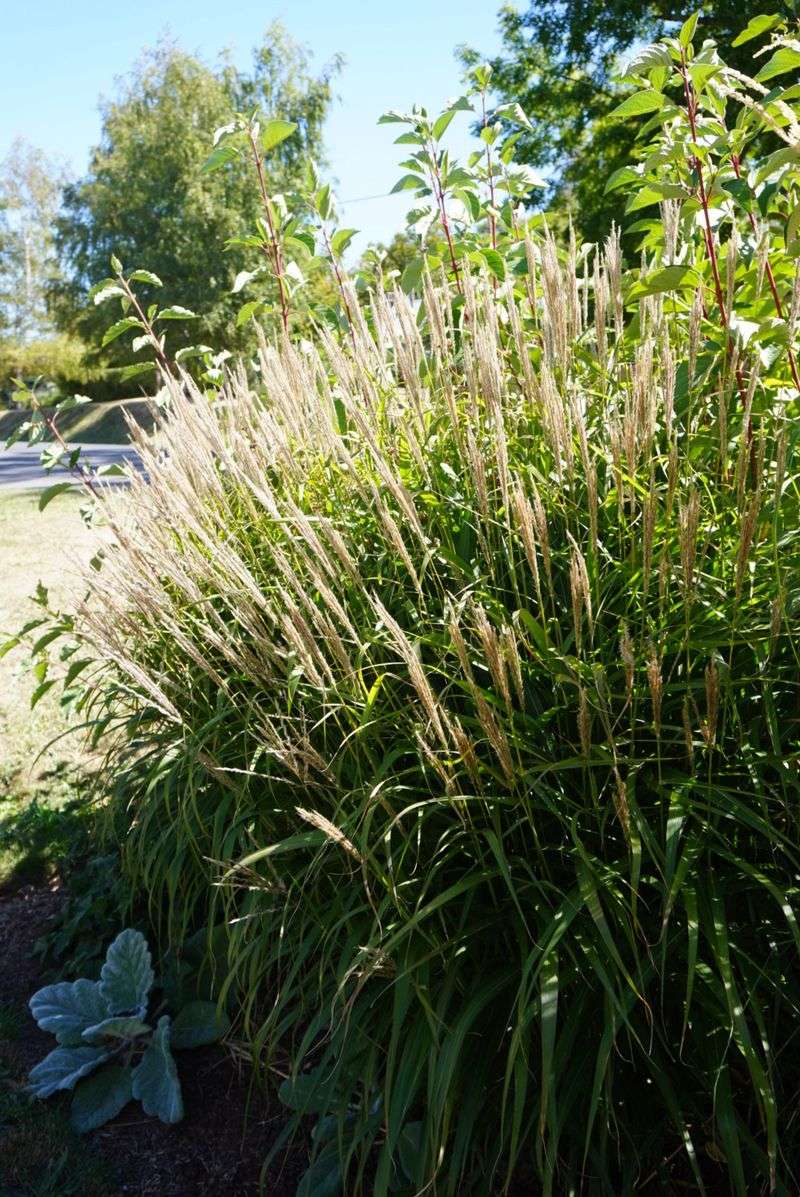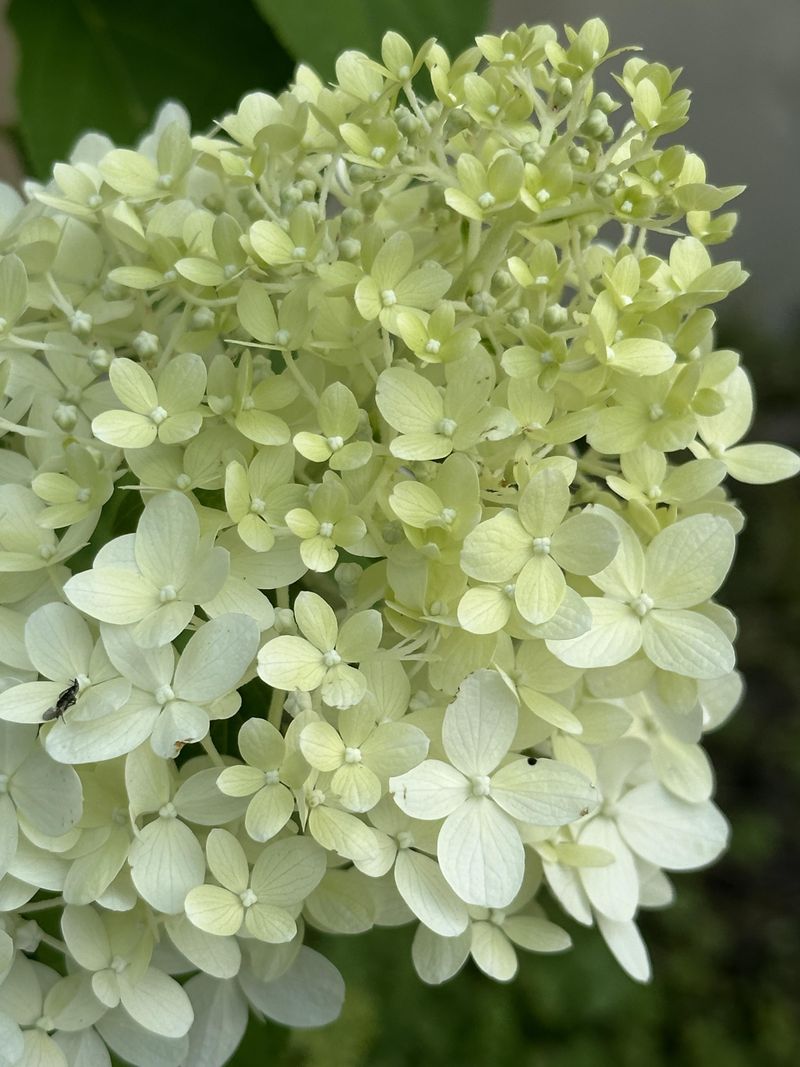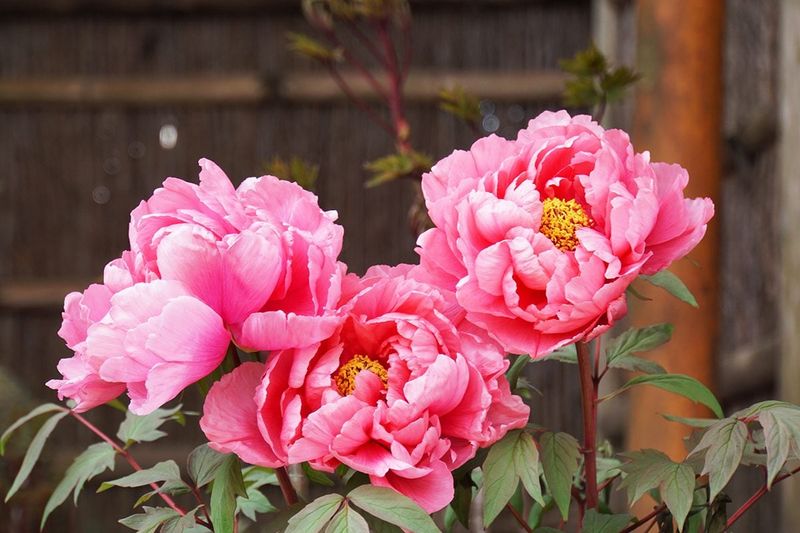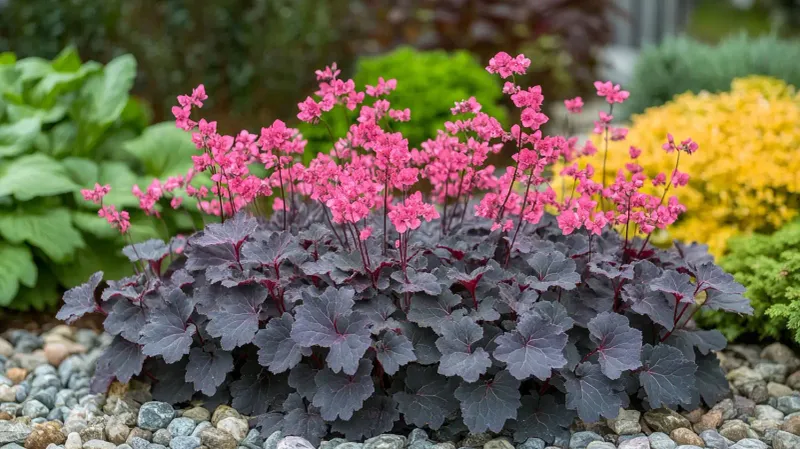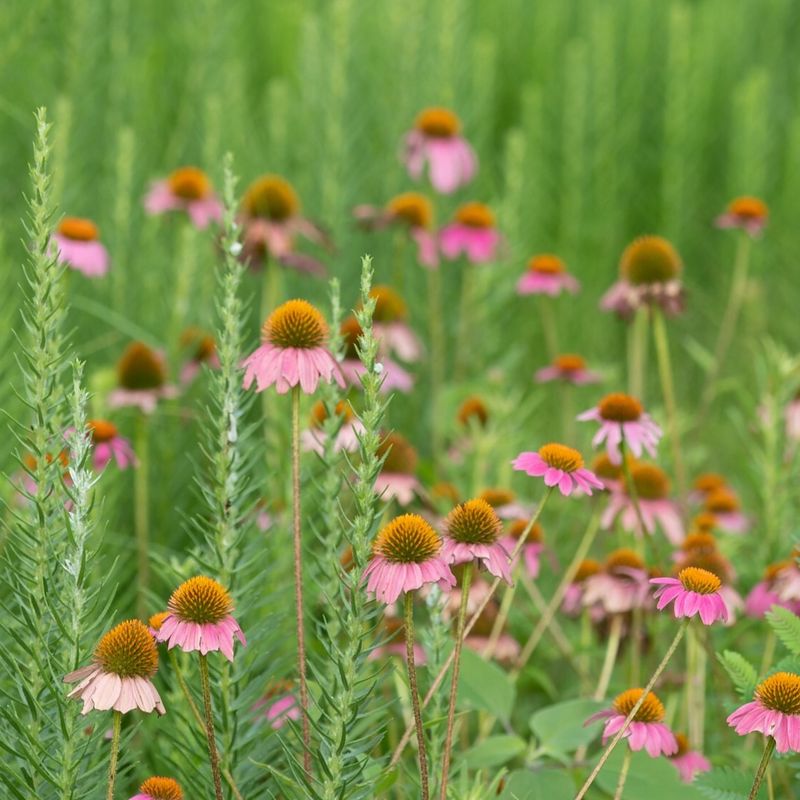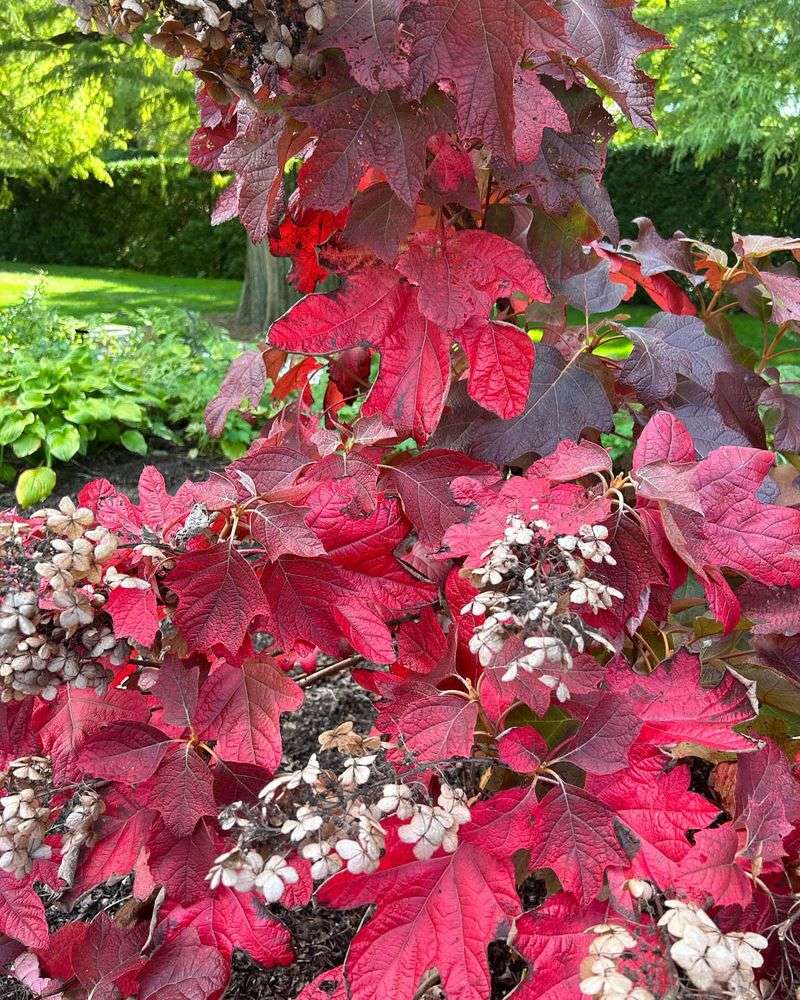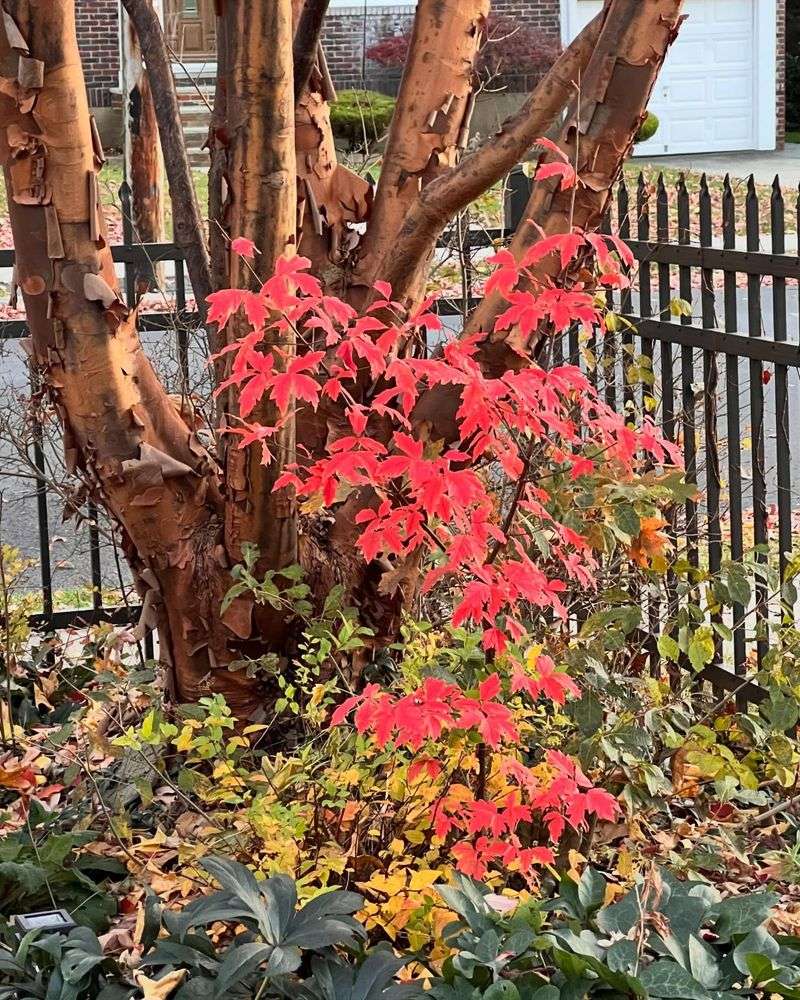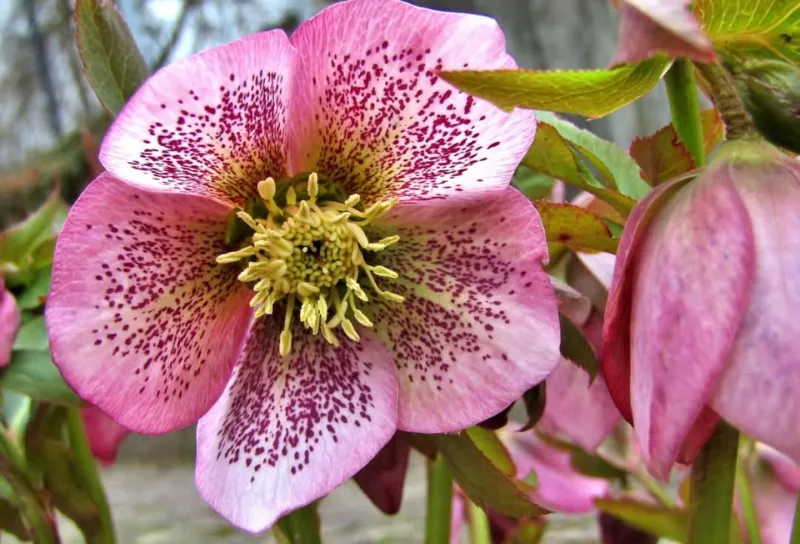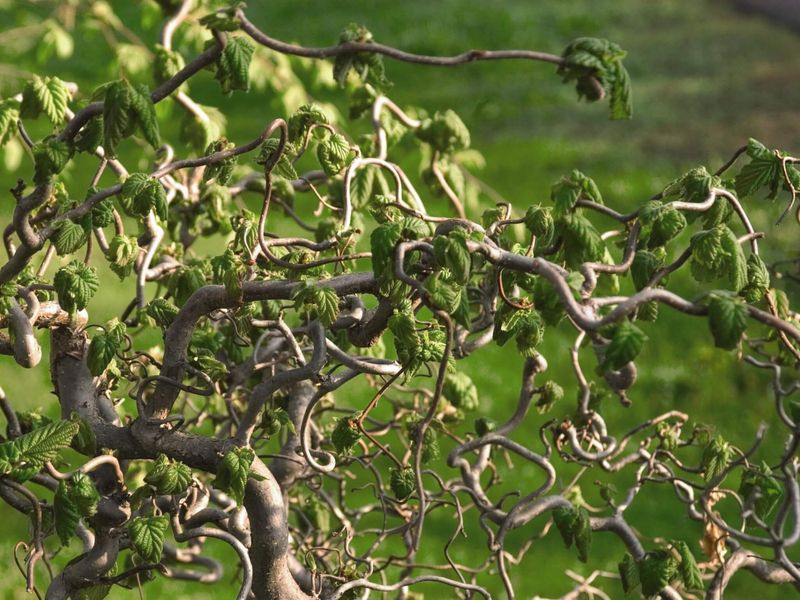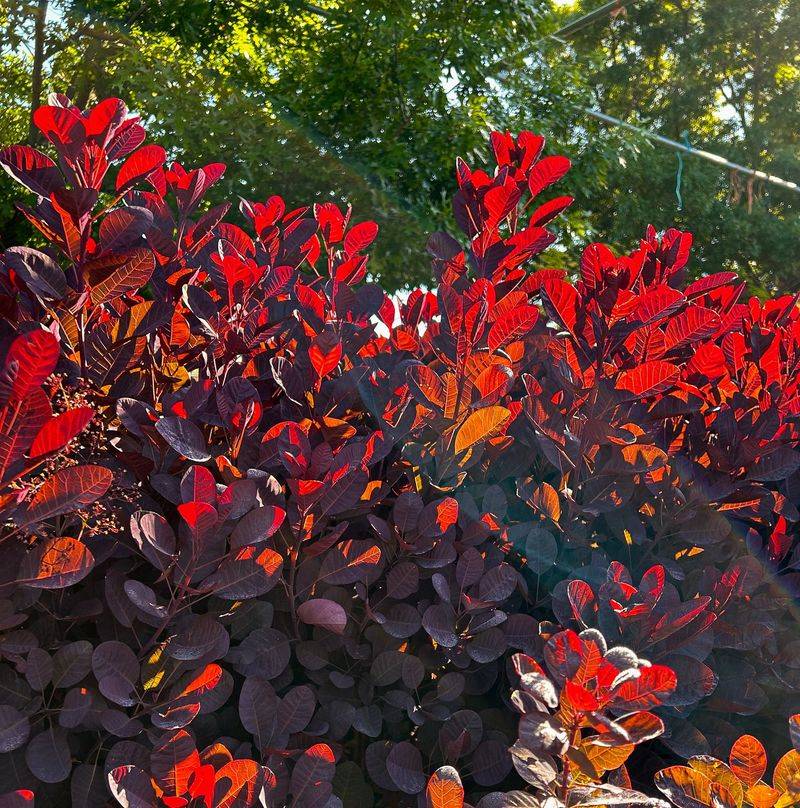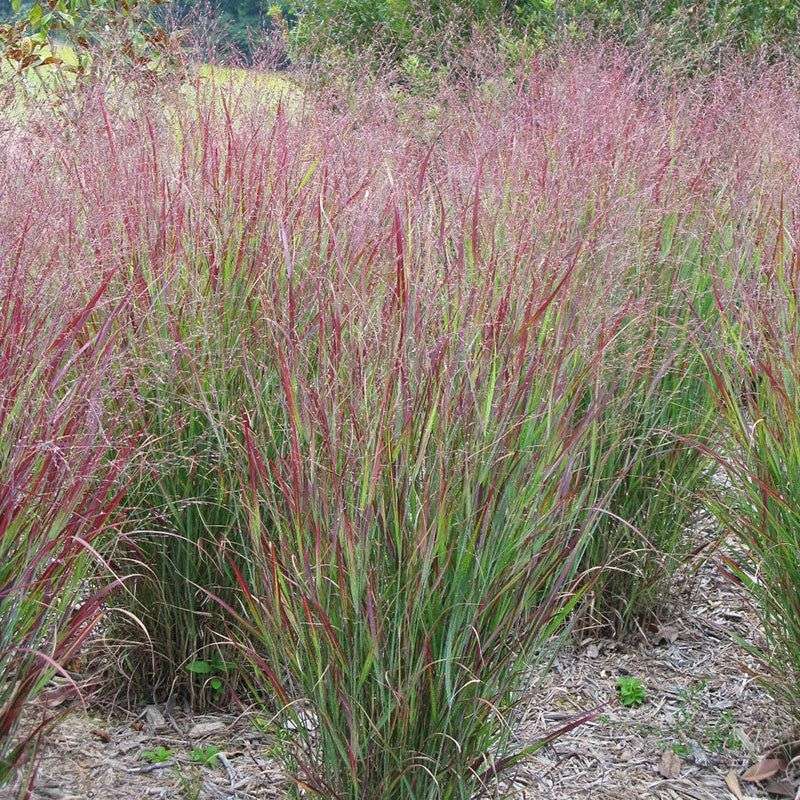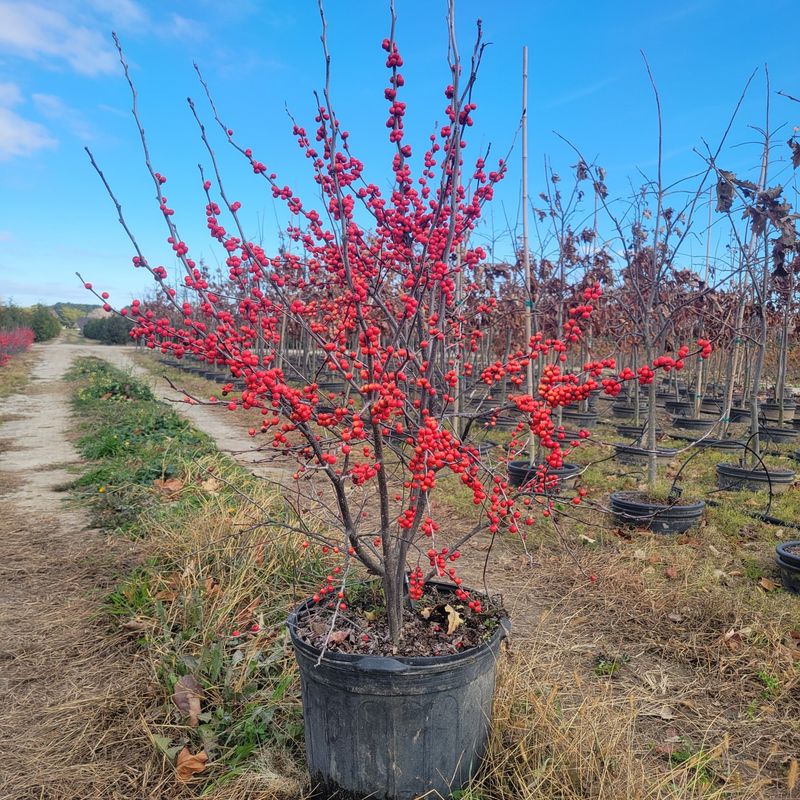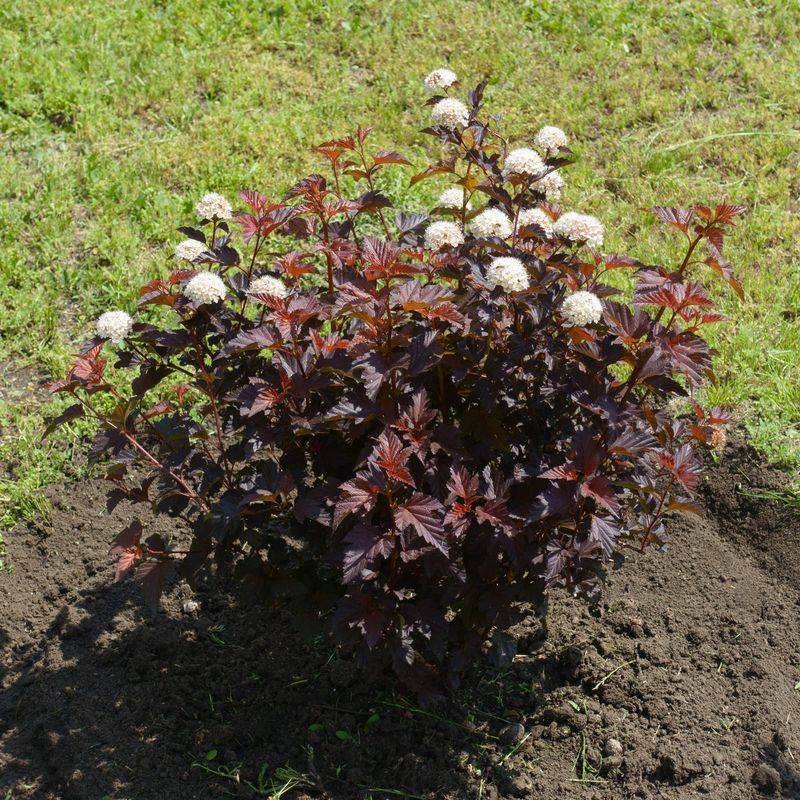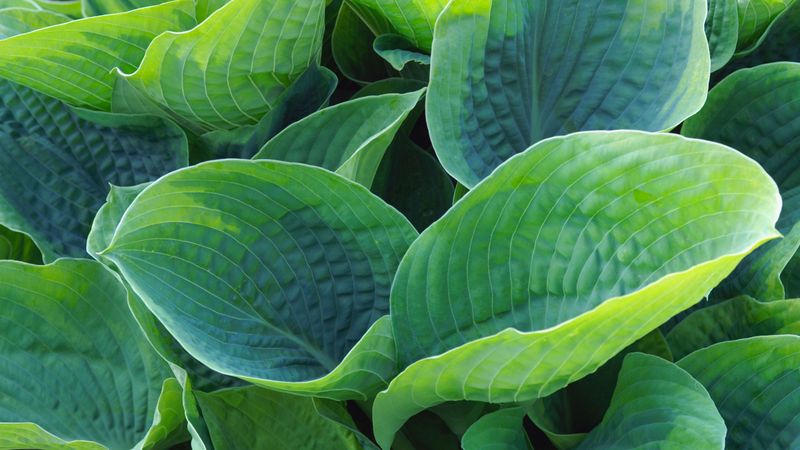Gardens have a way of surprising us when we pay attention to how they change over time. I’ve always loved watching certain plants fade quietly in winter, only to bounce back with wild energy in spring and summer.
It’s like they’re telling a story, chapter by chapter, all year long. Some plants disappear almost entirely, then suddenly take center stage when the weather warms up. Others might lose their leaves but still offer striking silhouettes against the snow or frost.
If you’re looking to build a garden that stays interesting no matter the season, these kinds of plants are game-changers. And honestly, there’s something deeply satisfying about knowing your garden always has something to say.
1. Japanese Maple
During spring, delicate star-shaped leaves unfurl in bright lime or burgundy hues, creating a lacy canopy that’s simply breathtaking. I find myself checking its progress almost daily when those first leaves appear.
Summer brings fullness as the tree reaches its maximum spread, providing dappled shade with its distinctive silhouette. The branches arch gracefully outward, creating a living umbrella effect that’s perfectly proportioned.
Fall transformation is where this tree truly shines – leaves turn fiery red or orange before dropping to reveal an artistic branch structure that stands like natural sculpture through winter.
2. Ornamental Grasses
Spring brings tiny shoots that barely hint at what’s coming. These unassuming sprouts might make you wonder if anything’s happening at all, but patience pays off with these garden sleepers.
By midsummer, most varieties reach their full height and begin developing feathery seed heads that catch the light beautifully. The transformation happens so gradually yet suddenly you’ll notice they’ve doubled in size.
Winter reveals perhaps their most striking phase – golden, wheat-colored plumes that stand tall through snow and frost. My favorites actually look better after the growing season ends, adding movement and sound to the winter garden.
3. Hydrangea Paniculata
Early spring reveals woody stems with small leaf buds that give little hint of the show to come. These plants start the season looking almost insignificant, hiding their potential beneath modest growth.
By midsummer, they’ve expanded dramatically, producing enormous cone-shaped flower clusters that can cause stems to arch under their weight. The flowers emerge white and gradually take on pink hues as summer progresses.
Even after leaves drop in fall, the dried flower heads remain, turning a lovely toasty brown that persists through winter. I’ve left mine standing for three seasons now – they catch frost and snow in ways that make the winter garden feel alive.
4. Peony
Burgundy shoots emerge from bare ground in early spring, unfurling into lush foliage that expands rapidly. These shoots always remind me of alien fingers poking through the soil – a weird but wonderful sight after winter’s emptiness.
May brings dramatic softball-sized blooms that seem impossibly large compared to their stems. The plants bulk up significantly during flowering, creating a bushy presence that anchors garden beds.
After blooming, the sturdy foliage remains attractive through summer before turning russet and gold in autumn. By winter, they disappear entirely underground – a complete vanishing act that makes their spring return all the more surprising each year.
5. Fothergilla
Spring brings bottlebrush-like white flowers that appear before the leaves, creating a ghostly effect against bare branches. These unusual blooms have a subtle honey scent that’s worth getting close for – I often find myself bending down just to catch a whiff.
Summer reveals rounded, blue-green leaves that create a compact, neat shrub form. The plant looks completely different than its spring version, settling into a quiet but pleasant background role.
Fall delivers the final transformation with leaves turning brilliant orange, red and yellow – often all on the same plant. Mine sits next to my front walk where it stops visitors in their tracks during October.
6. Heuchera (Coral Bells)
Winter reveals these plants at their most compact, with colorful rosettes hugging the ground in shades ranging from purple to caramel. Even under snow, their leaves maintain rich color that peeks through in surprising ways.
Spring brings delicate flower stalks that rise up to 18 inches above the foliage, completely changing the plant’s silhouette. The airy blooms dance above the leaves like tiny bells on wiry stems.
Summer heat may cause some varieties to look a bit tired, but by fall they plump up again with fresh leaves. I’ve had the same plants for six years now, and they’ve become wider and more impressive each season.
7. Coneflower (Echinacea)
Early spring brings small rosettes of green leaves that expand quickly as temperatures warm. These modest beginnings give little hint of the vertical growth spurt to come.
By midsummer, sturdy stems shoot upward to 3-4 feet, topped with distinctive daisy-like flowers featuring raised central cones. The plant transforms from ground-hugging to statuesque in just weeks.
After flowering, the seed heads remain standing through winter as dark spiky spheres. I’ve watched goldfinches cling to these stems in January, extracting seeds from the dried cones – a good reason to resist cutting them down in fall.
8. Oakleaf Hydrangea
Spring reveals large, deeply lobed leaves that unfurl dramatically, creating a bold texture unlike typical hydrangeas. The oak-shaped foliage emerges with a reddish tint that gradually shifts to deep green.
Summer brings cone-shaped white flower clusters that can reach 12 inches long, dramatically changing the plant’s appearance. These blooms age to pink, then rusty brown, remaining attached well into winter.
Fall delivers perhaps the most spectacular phase as leaves turn burgundy, purple, and crimson. My specimen planted against a brick wall creates such striking contrast that neighbors regularly stop to ask what that “amazing red plant” is during October.
9. Sedum ‘Autumn Joy’
Early spring brings succulent blue-green rosettes that slowly expand outward and upward. The fleshy stems and leaves have an almost artificial appearance – like plastic plants that somehow look perfectly natural in the garden.
By late summer, the plant has formed a broad mound topped with large flat flower clusters that start pale green before turning pink. The transformation from ground-hugging to 18-inch mounds happens so subtly you hardly notice it happening.
Winter showcases dried russet flower heads that stand above snow, adding height and structure when most perennials have disappeared. These seed heads catch frost in the most beautiful way – I’ve taken dozens of photos of mine on winter mornings.
10. Paperbark Maple
The namesake exfoliating bark provides year-round interest, peeling in thin cinnamon-colored sheets that curl attractively against the trunk. This unique feature becomes even more noticeable after leaf drop, creating winter texture unlike any other tree.
Spring and summer showcase delicate compound leaves that create a refined, airy canopy. The overall silhouette remains compact and well-proportioned, never overwhelming smaller gardens.
Fall brings exceptional color as leaves turn brilliant orange-red before dropping. I planted mine as a focal point visible from my kitchen window, and watching its seasonal transformations has become a daily pleasure.
11. Hellebore
Winter reveals these plants at their most dramatic, with cup-shaped flowers emerging while snow still covers the ground. The blooms nod downward as if protecting themselves from harsh weather, creating a secretive, almost magical appearance.
Spring brings expanded leathery foliage that forms substantial clumps as flowers fade. The plant nearly doubles in size during this period, becoming much more architectural.
Summer and fall show evergreen leaves maintaining structure while most perennials die back. My oldest plants have grown from dinner-plate sized to nearly three feet across over five years, proving they’re truly four-season performers worth their garden space.
12. Harry Lauder’s Walking Stick
Winter showcases this plant’s most distinctive feature – fantastically twisted branches that spiral and curl in seemingly impossible directions. After leaf drop, the contorted structure becomes fully visible, creating natural sculpture that’s especially striking with frost or snow.
Spring brings crinkled leaves that unfurl along the twisted branches, partially hiding their contorted nature. Yellow catkins dangle like ornaments, adding another textural element.
Summer shows a fully leafed-out shrub that appears almost normal from a distance. I’ve positioned mine where winter sun casts dramatic shadows of the twisted branches across snow – an effect that always makes me smile on cold January days.
13. Smokebush
Spring reveals purple or chartreuse foliage (depending on variety) that creates a colorful mass from the start. The initial growth spurt happens quickly, with plants leafing out almost overnight once temperatures warm.
By midsummer, airy flower panicles create a smoky, hazy effect floating above the leaves – hence the plant’s common name. The overall size expands dramatically during flowering, with some specimens growing several feet in just weeks.
Fall brings exceptional foliage color in fiery orange-red tones before leaves drop to reveal interesting branching patterns for winter. My purple-leaved variety turns an almost neon pink-red each October that looks artificial against the blue autumn sky.
14. Climbing Hydrangea
Winter reveals an intricate network of reddish-brown exfoliating stems clinging to surfaces, creating beautiful architectural patterns. The peeling bark adds textural interest even when the plant is dormant, resembling a living trellis.
Late spring brings heart-shaped leaves and flat white flower clusters that transform walls and tree trunks into flowering vertical gardens. The plant’s appearance changes completely once leafed out, becoming a lush green curtain.
Fall showcases golden-yellow foliage before leaves drop to once again reveal the fascinating stem structure. Mine grows on a north-facing chimney where it’s slowly creating a living tapestry that changes dramatically with each season.
15. Switchgrass
Spring brings narrow blue-green blades that form neat clumps, starting small but hinting at the vertical growth to come. The early season appearance is tidy and well-behaved, belying its future expansion.
By late summer, stems reach 4-5 feet tall, topped with airy seed heads that create a cloud-like effect when backlit. The plant transforms from modest clumps to dramatic vertical accents in a matter of months.
Winter showcases golden stems that remain upright through snow and ice, moving gracefully in winter winds. I’ve watched mine during January snowstorms, bending under the weight of snow only to spring back once it melts – a perfect example of nature’s resilience.
16. Winterberry Holly
Summer shows this native shrub as an unremarkable mass of green leaves that blend into the background. You might walk past without noticing it – I certainly overlooked mine during its first summer in my garden.
Fall brings dramatic transformation as leaves drop to reveal branches laden with bright red berries. The effect is stunning – seemingly overnight, the plant becomes a focal point rather than background filler.
Winter showcases bare branches covered with persistent berries that attract birds and provide brilliant color against snow. My specimen outside the kitchen window brings daily entertainment as cardinals and cedar waxwings visit to feast on the bright fruits.
17. Ninebark
Spring reveals colorful foliage in purple, copper, or gold (depending on variety) that emerges with surprising vibrancy. The leaf color often starts more intense than it will remain, creating an early season show.
Summer brings clusters of white or pink flowers followed by interesting seed heads, while the plant expands to nearly twice its spring size. The branches arch outward creating a fountaining effect that gives the shrub movement.
Winter showcases exfoliating bark that peels in thin layers, revealing multiple colors on stems and creating textural interest. My ‘Diablo’ variety has bark that resembles cinnamon sticks – a detail I never expected when I planted it for its purple leaves.
18. Hosta
Spring brings tightly furled shoots that emerge from bare ground like pointed fingers, unfurling into leaves that expand dramatically day by day. The emergence always seems magical – yesterday nothing, today spiral shoots poking through soil.
Summer reveals full-sized plants that can range from dinner-plate size to massive three-foot clumps, depending on variety. Tall flower stalks emerge, adding vertical elements to these otherwise horizontal plants.
Fall sees a gradual collapse as leaves yellow and flatten, before disappearing entirely in winter. My garden has dozens of varieties that create negative space in winter where summer showed lush mounds – a seasonal vanishing act that makes their spring return all the more dramatic.


